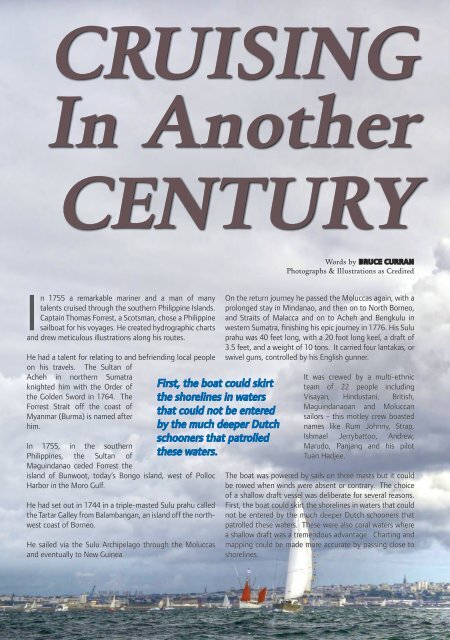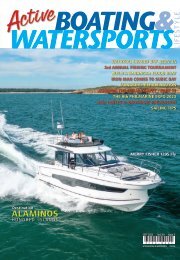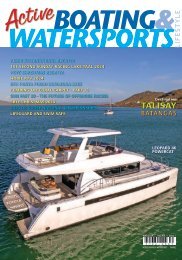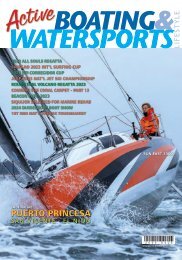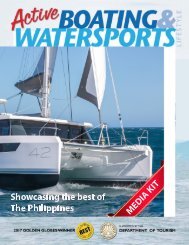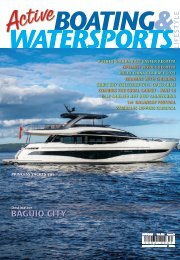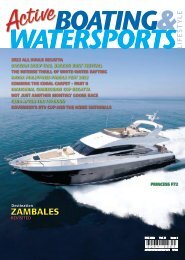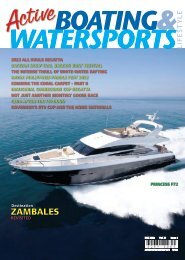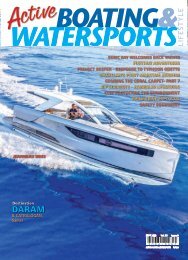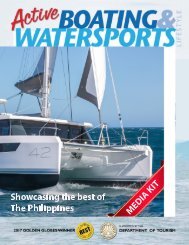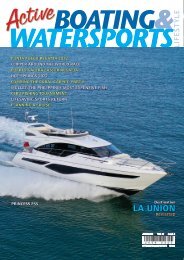Create successful ePaper yourself
Turn your PDF publications into a flip-book with our unique Google optimized e-Paper software.
CRUISING<br />
In Another<br />
CENTURY<br />
Words by BRUCE CURRAN<br />
Photographs & Illustrations as Credited<br />
I<br />
n 1755 a remarkable mariner and a man of many<br />
talents cruised through the southern Philippine Islands.<br />
Captain Thomas Forrest, a Scotsman, chose a Philippine<br />
sailboat for his voyages. He created hydrographic charts<br />
and drew meticulous illustrations along his routes.<br />
He had a talent for relating to and befriending local people<br />
on his travels. The Sultan of<br />
Acheh in northern Sumatra<br />
knighted him with the Order of<br />
the Golden Sword in 1764. The<br />
Forrest Strait off the coast of<br />
Myanmar (Burma) is named after<br />
him.<br />
In 1755, in the southern<br />
Philippines, the Sultan of<br />
Maguindanao ceded Forrest the<br />
island of Bunwoot, today’s Bongo island, west of Polloc<br />
Harbor in the Moro Gulf.<br />
He had set out in 1744 in a triple-masted Sulu prahu called<br />
the Tartar Galley from Balambangan, an island off the northwest<br />
coast of Borneo.<br />
He sailed via the Sulu Archipelago through the Moluccas<br />
and eventually to New Guinea.<br />
First, the boat could skirt<br />
the shorelines in waters<br />
that could not be entered<br />
by the much deeper Dutch<br />
schooners that patrolled<br />
these waters.<br />
On the return journey he passed the Moluccas again, with a<br />
prolonged stay in Mindanao, and then on to North Borneo,<br />
and Straits of Malacca and on to Acheh and Bengkulu in<br />
western Sumatra, finishing his epic journey in 1776. His Sulu<br />
prahu was 40 feet long, with a 20 foot long keel, a draft of<br />
3.5 feet, and a weight of 10 tons. It carried four lantakas, or<br />
swivel guns, controlled by his English gunner.<br />
It was crewed by a multi-ethnic<br />
team of 22 people including<br />
Visayan, Hindustani, British,<br />
Maguindanaoan and Moluccan<br />
sailors - this motley crew boasted<br />
names like Rum Johnny, Strap,<br />
Ishmael Jerrybattoo, Andrew,<br />
Marudo, Panjang and his pilot<br />
Tuan Hadjee.<br />
The boat was powered by sails on three masts but it could<br />
be rowed when winds were absent or contrary. The choice<br />
of a shallow draft vessel was deliberate for several reasons.<br />
First, the boat could skirt the shorelines in waters that could<br />
not be entered by the much deeper Dutch schooners that<br />
patrolled these waters. These were also coral waters where<br />
a shallow draft was a tremendous advantage. Charting and<br />
mapping could be made more accurate by passing close to<br />
shorelines.<br />
42


